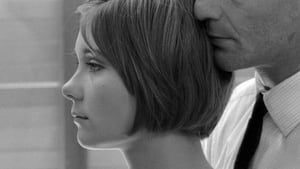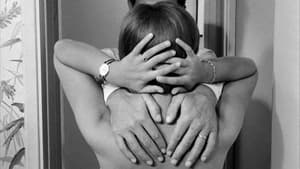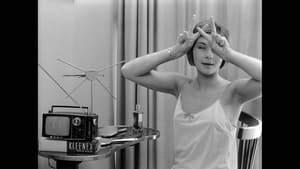Contact: [email protected]
Video Sources 0 Views

Synopsis





A Married Woman Colorized 1964: Rediscovering a French Classic in Vibrant Hues
Introduction
The world of cinema has always been a realm of innovation and transformation, where old movies find new life through technological advancements. One such classic French film that has undergone a fascinating metamorphosis is “A Married Woman Colorized,” originally released in 1964. This article explores the significance of the colorized version of this cinematic gem, shedding light on its director, Jean-Luc Godard, and the controversial yet captivating process of bringing this black and white masterpiece into the colorful spectrum.
Read Media File Transfer Agreement: Terms and Conditions
Read FAQ
The Evolution of Colorized Movies
Before delving into the specifics of “A Married Woman Colorized 1964,” it’s crucial to understand the broader context of colorization in the film industry. The concept of adding color to black and white films dates back to the early days of cinema, driven by the desire to enhance visual appeal and make films more marketable. However, early colorization techniques were met with resistance and controversy, as purists argued that altering the original artistic vision compromised the integrity of the films.
Technological advancements in colorization have come a long way since then. The advent of digital technology has enabled a more nuanced and sophisticated approach, allowing for greater precision and respect for the original cinematography. This evolution sets the stage for the reimagining of classics like “A Married Woman Colorized.”
A Closer Look at A Married Woman Colorized 1964
Directed by the iconic Jean-Luc Godard, “A Married Woman” is a cornerstone of French cinema. Godard, known for his innovative storytelling and unconventional narrative techniques, crafted a film that explores the complexities of relationships and societal expectations. The colorized version of this classic provides a unique opportunity to revisit Godard’s vision with a fresh perspective.
The film revolves around Charlotte, a married woman caught between the demands of her family and her own desires. Godard weaves a tapestry of emotions, societal critiques, and poetic visuals that have solidified the film’s place in cinematic history. “A Married Woman Colorized” stands as a testament to Godard’s ability to push the boundaries of storytelling.
Understanding the Colorization Process of the Film
Colorizing an old film involves a meticulous process that requires a delicate balance between preserving the original aesthetic and infusing new life into the visuals. In the case of “A Married Woman Colorized 1964,” the restoration team aimed to honor Godard’s original vision while embracing the possibilities that colorization offered.
The process involves digitally coloring each frame, paying close attention to details such as skin tones, costumes, and backgrounds. The goal is to enhance the overall viewing experience without overshadowing the director’s intended atmosphere. The result is a vibrant and immersive rendition that invites audiences to see the film through a different lens.
Analyzing the Visual and Narrative Elements
Colorization goes beyond mere aesthetics; it can significantly impact the way a story is perceived. In “A Married Woman Colorized 1964,” the use of color serves as a narrative tool, highlighting key emotions and thematic elements. Scenes that were once shrouded in the starkness of black and white now burst forth with a spectrum of emotions, creating a more visceral connection with the characters and their struggles.
Godard’s visual aesthetics, coupled with the newfound vibrancy of color, create a mesmerizing juxtaposition that elevates the film’s impact. The colorization process enhances the film’s ability to convey complex emotions and societal critiques, inviting viewers to engage with the story on a deeper level.
The Controversy Surrounding the Colorized Version
Despite the technological advancements and artistic intentions behind colorization, it is not without controversy. Purists argue that altering a classic film’s original black and white presentation can dilute its authenticity and compromise the director’s vision. In the case of “A Married Woman Colorized 1964,” the controversy has sparked debates about the necessity of colorizing old films.
Reviews of the colorized version often draw comparisons to the original black and white release, with some praising the revitalization of Godard’s work and others expressing reservations about the departure from the film’s initial aesthetic. This controversy adds an extra layer of intrigue to the film’s journey through time.
Preserving the Legacy of A Married Woman Colorized
Film preservation is a crucial aspect of ensuring that cinematic masterpieces endure for future generations. “A Married Woman Colorized 1964” raises questions about the preservation of both the original black and white version and its colorized counterpart. While some argue for the preservation of the film in its pure, unaltered form, others champion the importance of embracing new technologies to introduce classic films to contemporary audiences.
Preserving the legacy of “A Married Woman” involves acknowledging the film’s evolution, from its black and white roots to the vibrant colorized version. Both versions contribute to the film’s cultural significance, offering viewers a choice in how they experience this cinematic journey.
The Impact on Viewers: Experiencing the Film in Color
One of the most intriguing aspects of colorizing old movies is the impact on the viewer experience. For audiences accustomed to the visual richness of modern cinema, the addition of color can bridge the gap between the past and present. “A Married Woman Colorized 1964” provides an opportunity for viewers to engage with classic cinema in a way that feels more contemporary and accessible.
The emotional resonance of the film is heightened by the use of color, allowing viewers to connect with the characters and themes on a more visceral level. The colorization process breathes new life into the film, making it a captivating experience for both longtime fans and those discovering “A Married Woman” for the first time.
Should Old Movies Be Colorized? The Ongoing Debate
The question of whether old movies should be colorized remains a topic of ongoing debate in the film industry. While purists argue for the preservation of films in their original form, proponents of colorization emphasize the importance of adapting to evolving technologies to keep classic cinema relevant.
The debate surrounding “A Married Woman Colorized 1964” encapsulates these conflicting perspectives. Some view colorization as a way to introduce classic films to younger audiences who may be hesitant to engage with black and white cinema. Others argue that altering the artistic intent of a director disrupts the authenticity of the original work.
As technology continues to advance, this debate is likely to persist, with filmmakers, preservationists, and audiences weighing in on the balance between honoring tradition and embracing innovation.
Bringing Classic Cinema to New Audiences Through Colorization
One undeniable benefit of colorization is its potential to make classic cinema more accessible to contemporary audiences. While purists may argue that classic films should be appreciated in their original state, the reality is that evolving viewing habits and preferences impact how new generations engage with cinematic history.
“A Married Woman Colorized 1964” serves as a bridge between the past and present, inviting a new audience to appreciate the brilliance of Jean-Luc Godard’s storytelling. The colorization process offers a fresh perspective, breaking down barriers that might otherwise prevent younger viewers from exploring the rich tapestry of classic cinema.
By embracing colorization, classic films can find a renewed relevance, introducing timeless stories to a broader audience and ensuring that the magic of cinematic storytelling continues to captivate hearts across generations.
Conclusion
In conclusion, “A Married Woman Colorized 1964” stands as a testament to the evolution of cinema and the ongoing debate surrounding the colorization of old movies. Jean-Luc Godard’s masterpiece, whether experienced in its original black and white form or the vivid colorized version, remains a cinematic gem that transcends time.
The colorization process breathes new life into this classic French film, offering audiences a chance to rediscover its beauty and complexity. As viewers, we are fortunate to have the option to appreciate both versions, each contributing to the rich tapestry of cinematic history.
In the ever-changing landscape of film, the journey of “A Married Woman” reflects the delicate balance between preserving the past and embracing the future. Encouraging readers to explore both the original black and white version and the colorized rendition is an invitation to fully appreciate the artistic merits of this timeless classic. Whether you are a purist cherishing the authenticity of the original or an enthusiast embracing the vibrancy of color, the magic of “A Married Woman” endures, captivating audiences across generations.














